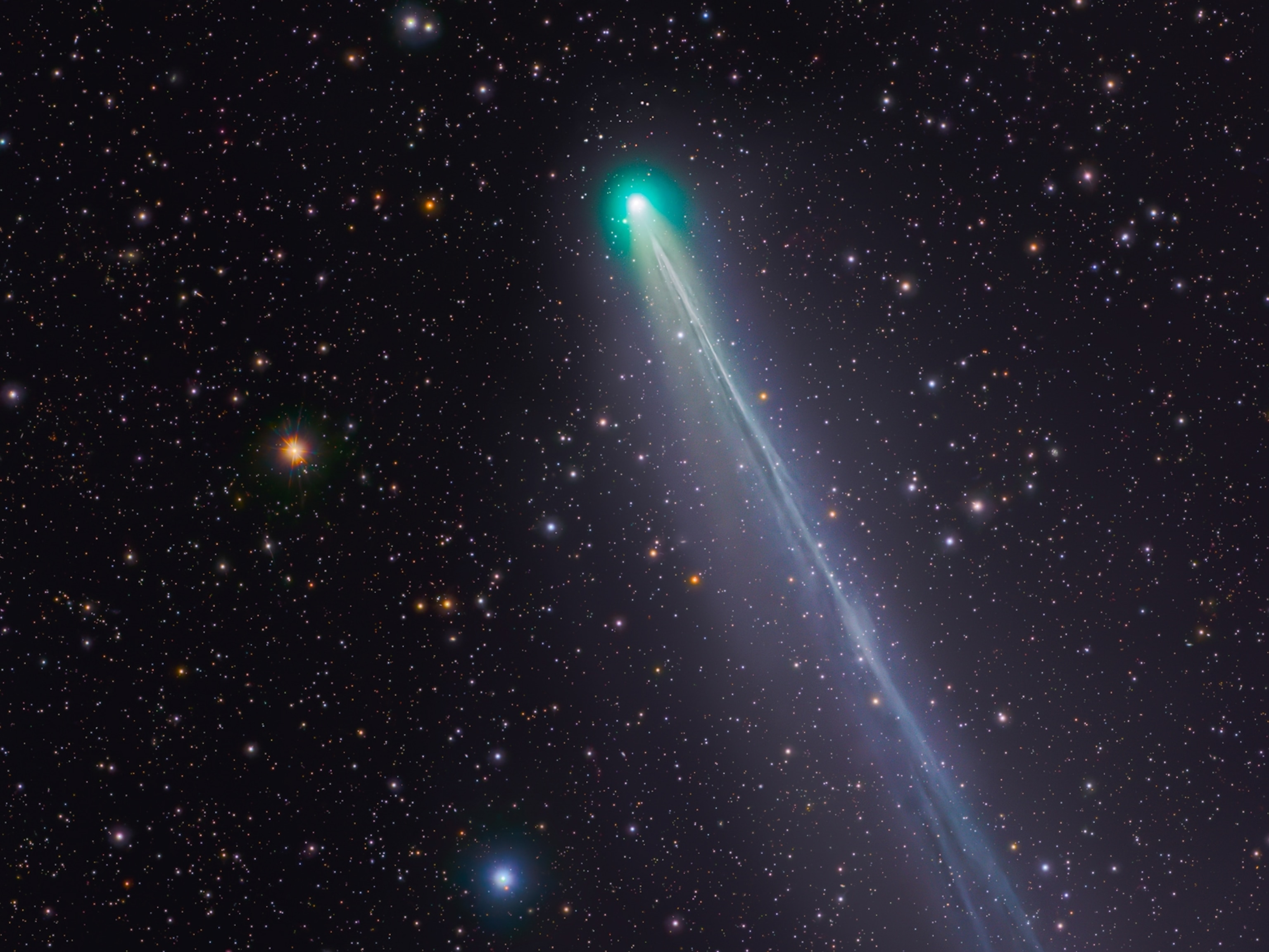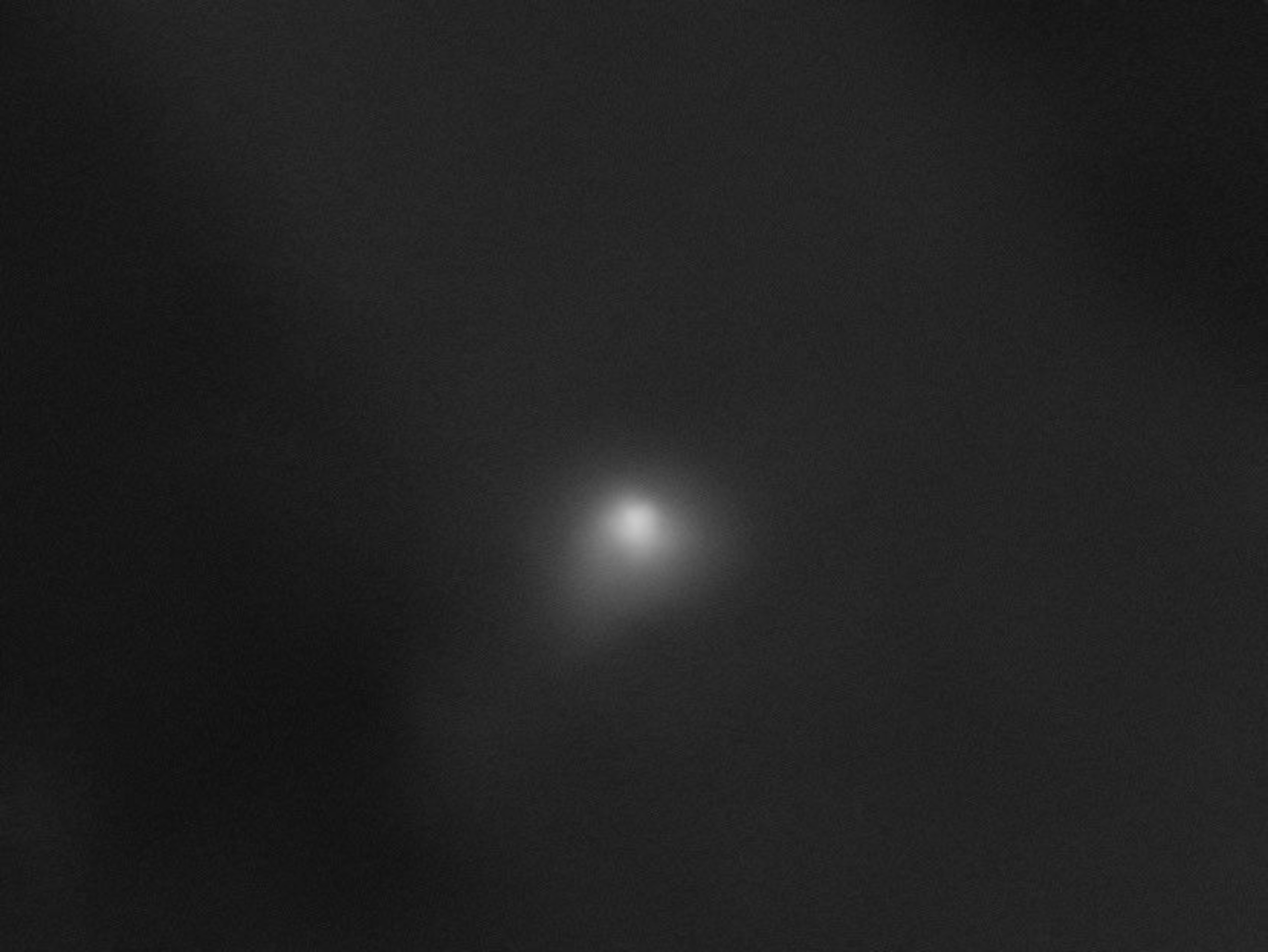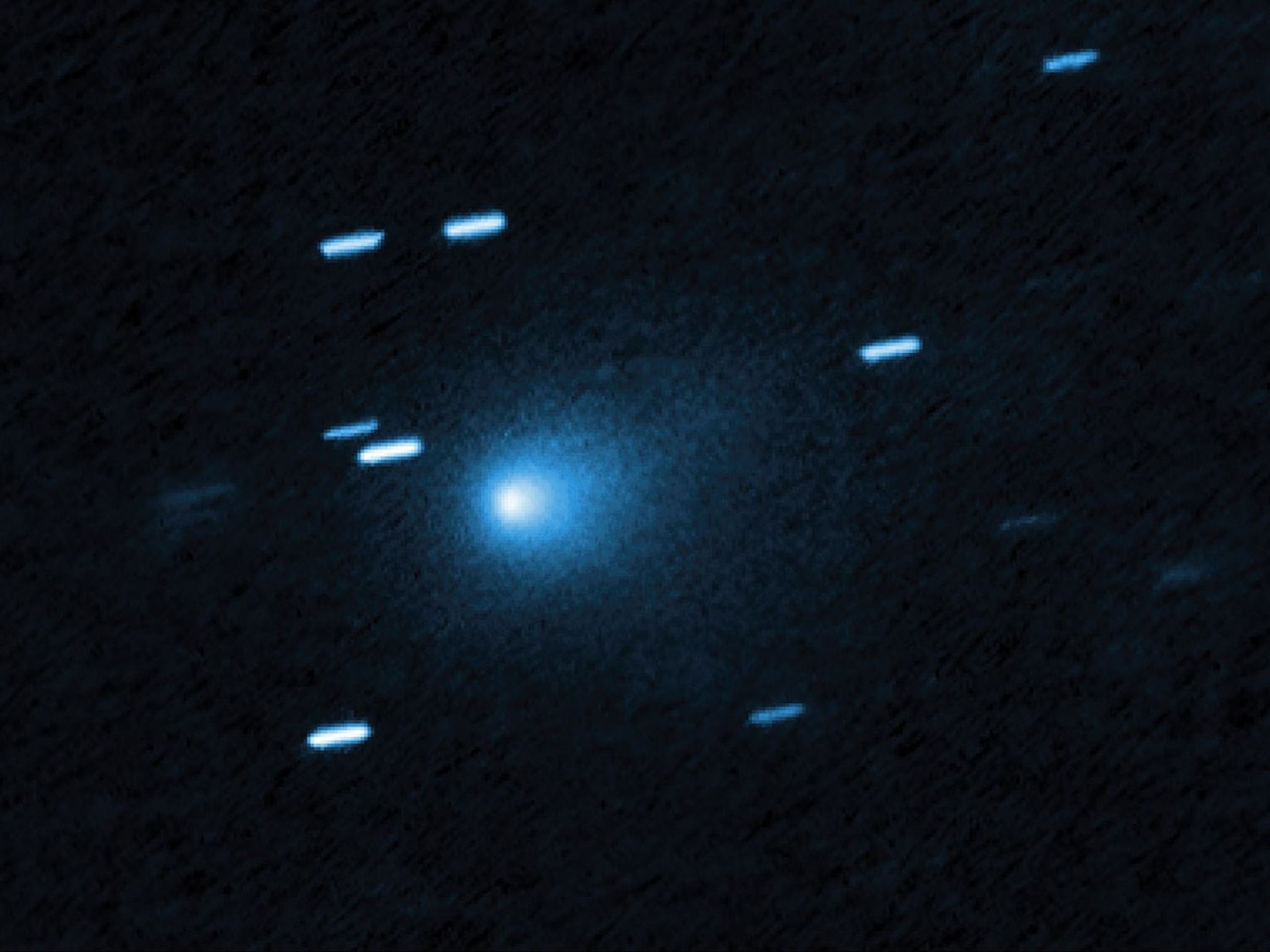
Bright Green Comet Easy to See This Week
A long-tailed comet at the height of its brilliance is streaking across early morning skies this week, experts say.
A bright green comet is streaking across early morning skies this week, experts say.
Comet McNaught C/2009 R1 has been steadily gaining brightness and will be most brilliant through June 16, during its closest approach to Earth at about 105 million miles (170 million kilometers) away.
Some predictions say the comet—best seen from the Northern Hemisphere—could be at least as bright as the stars that make up the familiar Big Dipper constellation.
C/2009 R1, already visible to the naked eye as a faint, fuzzy ball low in the northeastern sky, is best seen in the hour before the sun rises, said Anthony Cook, an astronomical observer at Los Angeles's Griffith Observatory.
"Because it has a hazy outline, it should be observed from as far away from light pollution as possible," Cook said.
(Read about a green, two-tailed comet seen in 2009.)
"Between now and the 24th of June, it's visible in a moon-free sky, but after the 26th it will be too close to the sun to see."
Comet McNaught's Superlong Tail Promises Flashy Show
The intensity of brightness seen in comet McNaught C/2009 R1—named after the Australian astronomer Robert McNaught who first spotted it in September 2009—only occurs once every four years or so, Cook said. (Learn about the "age of comets.")
Another comet also named by the astronomer, McNaught C/2006 P1, put on a spectacular show in 2007. It was later discovered to be one of the biggest and brightest known comets.
As C/2009 R1 nears the sun, its ice melts, releasing gas and dust that stream away into space. (Explore an asteroids and comets interactive.)
This reaction forms a distinctive blue tail of ionized carbon monoxide stretching a million miles (about 1.6 million kilometers) long. Through binoculars, the tail appears about the same length as the width of the full moon in the sky.
Meanwhile, the comet's nucleus is only a few miles across, with a surrounding glowing greenish cloud of gas that is about 250,000 miles (400,000 kilometers) across—roughly the distance from Earth to the moon.





